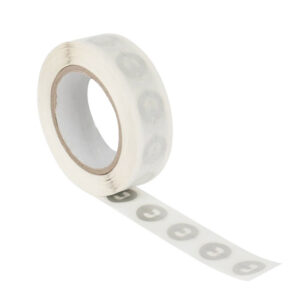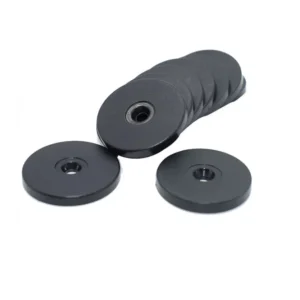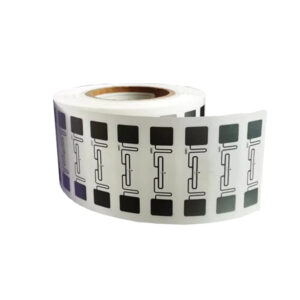Paper UHF RFID Label
Paper UHF RFID Labels, equipped with an appropriate inlay, find extensive use across various sectors like logistics, pharmaceuticals, and numerous industrial areas. The core technology, RFID or Radio Frequency Identification, enables seamless data transfer via radio signals to the data chip embedded in the label. The labels’ versatility makes them suitable for diverse applications. Essentially, RFID technology uses a radio link for transmitting data to the integrated chip inside the label. Therefore, whether it’s tracking a pharmaceutical product or managing logistics, these labels enhance efficiency and accuracy in operations and asset management.
Description
|
Item Name
|
Paper UHF RFID Label
|
|
Frequency
|
860-960 MHz
|
|
Chip Type
|
MR6-P, U8,U9,M730,Alien H9,H10 etc
|
|
Memory
|
128/96 bit EPC,32/64 bit UM (Depends on different chips)
|
|
Reading Distance on Metal 2 W reader ERP, free space |
Up to 8 m(Depends on chips and environment)
|
|
Dimensions
|
54×34 mm
|
|
Antenna
|
30x50mm
|
|
Mounting Method
|
Self-adhesive
|
|
Affixes To
|
Flat, dry and non-metallic surfaces
|
|
Housing Material
|
Paper
|
|
Color
|
White or Yellow
|
|
Water
|
IP67, 20° C, 1 m× 35 min
|
|
Environmental Test Conditions
|
20° C, 100 h
|
|
Vibration
|
IEC 68.2.6 [10 g, 10 to 2000 Hz, 3 axis, 2.5 h]
|
|
Shock
|
IEC 68.2.29 [40 g, 18 ms, 6 axis, 2000 times]
|
|
Storage
|
On reel, Shelf life max. 1 year at -10° to +40°C, 30-70% relative humidity
|
|
Operating
|
-20° to +70° C
|
|
Standards
|
ISO 18000-6C
|
|
Warranty
|
1 Year
|
|
Chip Parameter : Impinj M700 Series Chip
|
||||||
|
Chip Parameter
|
M730
|
M750
|
M770
|
M775
|
M780
|
M781
|
|
EPC
|
128 bits
|
96 bits
|
128 bits
|
128 bits
|
496 bits
|
128 bits
|
|
TID
|
96 bits
|
96 bits
|
96 bits
|
96 bits
|
96 bits
|
96 bits
|
|
User Area
|
0
|
32 bits
|
32 bits
|
32 bits
|
128 bits
|
512 bits
|
Yes. Our factory is located in Shenzhen, and we have been involved in this industry more than 10 years.
2. What is your MOQ?
It is very flexible.Usually, our MOQ is 500pcs, for some items, the MOQ is 1000pcs.
3.What is your payment terms?
For bulk order:50% deposit and 50% before delivery by TT Or Western Union.
For Samples order Below USD100, Paypal is OK.
4. What do you usually deliver the goods?
By DHL, Fedex, TNT, etc. It takes 3-7 working days door to door service.
Some bulk order, also send by air shipment.
5. Can you offer free sample?
If the stock available,free samples can be provided any time.
6.What’s your production capacity?
RFID Tag:5,000,000pcs/month
RFID Card: 3,000,000pcs/month
RFID Inlay: 5,000,000pcs/month





